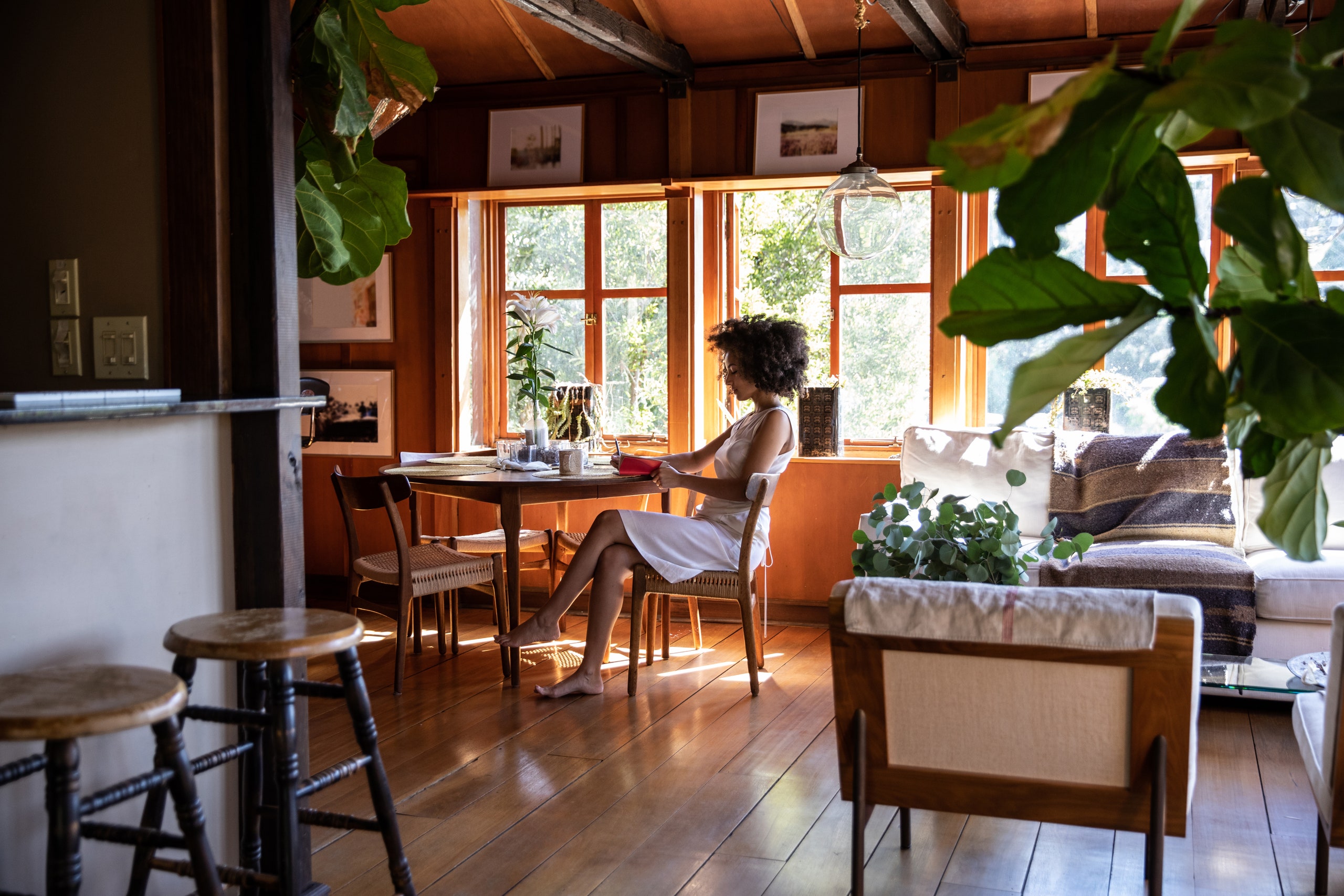“Are you sure this sounds okay? Not too harsh?” I handed my husband my phone, my hands clammy with sweat. “It looks great!” he smiled back, trying to reassure me that the work email I’d spent the past hour painfully crafting wouldn’t in fact result in the end of the world.
After I hit send, a wave of nausea overtook me as if I’d run a mile and had to stop to catch my breath. For as long as I can remember, I’ve had a laundry list in my head of everything that could go wrong: disappointing a client with an overly assertive email, being ghosted by that friend who hasn’t texted back, failing spectacularly at a new project. In college, after my older brother died unexpectedly in 2005, this doomsday thinking felt like a superpower. If I could predict the future, then no outcome could blindside me again.
But then came the pandemic, and we were all forced into a permanent state of grief and uncertainty. I’d wake up in the middle of the night and wander around my home for hours. By 3 a.m., I’d imagined every worst case scenario possible for the day ahead; overthinking the smallest details to the point of exhaustion. Like so many others who’ve had to juggle the demands of work and caregiving through COVID-19 lockdowns, facing an unknowable future triggered my anxiety.
But at the beginning of this year, after too many Mondays spent on the verge of a panic attack, I decided to start writing down all of my worries each morning. I’d read countless articles about how journaling your thoughts helps relieve anxious feelings, and I wanted to give it a try. That first day, I worried (of course) that if I allowed myself to list everything out, I’d spiral into a ball of despair. Instead, I found that writing out my fears at the beginning of my day was like purging myself, or taking an icy shower that jolts you awake.
In the following weeks, as I looked back on my notes, it hit me that the majority of everything I’d written down never materialized. All of these fears that had felt so tangible in the moment were like a smoke screen, distracting me from reality. I’d heard before that most of the things we stress over will never actually come to pass, but I’d never thought to try and prove my worries wrong for myself. So, I added in a second step to my journaling: I’d jot down my anxieties in the morning and then write what ended up happening at the end of the day.
To my surprise, none of what kept me up at night ended up taking place. And as it turns out, my two-step journaling approach is backed by science. In a study from last year in the journal Behavior Therapy, researchers found that by challenging our worries with objective evidence, our anxious symptoms are thought to decrease. According to the cognitive behavioral therapists I reached out to, a large part of why this works is because it allows us to identify biases in our thinking. “When we’re anxious, we confuse possibility with probability,” psychologist Dr. Jenny Taitz told me. “You’ll never feel at ease when catastrophic, worst-case scenario interpretations run wild in your mind.”
Proving my plethora of anxieties wrong gave me a small thrill. No, that one email didn’t end up being the train wreck I’d imagined; the friend who didn’t return my text wasn't, in fact, ghosting me; the new project I fretted over was actually doable. But the real surprise was the soothing realization that all of these worries and frustrations seemed to miraculously work themselves out and that I, somehow, didn’t crumble under the weight of them.
Dr. Taitz, who works as an assistant clinical professor in psychiatry at the University of California, Los Angeles, says it’s important to try and step back from our thoughts when we’re feeling intensely emotional. “We often remember our fears rather than what actually occurs,” Dr. Taitz points out. She says that taking a moment to start tracking what actually happens shifts our perspective and motivation to be more mindful of our thoughts. “The same way we have a spam filter, we need to learn and practice clearly observing what is noise in our own minds.”
In other words: accepting that many of our worries are simply lies we tell ourselves can free us from their hold.
And this doesn’t mean leaning into more “positive thinking,” either. After a global pandemic has left us all reeling and often fearing the worst, opting for a more realistic way of thinking can help us better cope when the unexpected happens, says clinical psychologist, Dr. Joel Minden. “The reality is that the future is always, to some extent, unpredictable and uncontrollable, so we don’t know for sure that things will go well.” Instead, he recommends asking yourself: What can I do to be more effective or how will I respond to difficult thoughts and feelings?
For me, trusting that most events will never live up to my fears has given me the permission to look at things through a more hopeful lens. “The worries may persist or reappear,” Dr. Minden notes, but we can still allow the background noise to exist and make the decision to redirect our attention to whatever is more meaningful in the moment.
Like many others grappling with the effects of the past year and a half, I now find consolation in focusing on the present, and in reminding myself of what I’m capable of overcoming. My most recent note to myself reads:
“When have I ever let not being okay stop me?”
